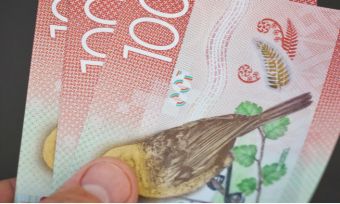Co-author: Michelle Norton
Canstar breaks down the reasons why grabbing a KiwiSaver opt in form should be the top of your to-do list, so you can reap the benefits of KiwiSaver.
Benefits of KiwiSaver – let us count the ways
Along with the fact that saving and investing for the future is a wise thing to do, there are some great benefits of KiwiSaver which you may not be aware of. Here are some incentives to get you reaching for that KiwiSaver opt in form!

Member tax benefit
If you’re 18 years or older, the Government will make an annual contribution towards your fund. They pay 50 cents for every dollar of your own annual contributions to your KiwiSaver – up to a maximum payment of $521.43 each year. This means if you contribute at least $1,042.86 a year, you will be eligible for the maximum credit.
Compulsory employer contributions
If you’re contributing to KiwiSaver from your pay, your employer also has to make contributions. In addition to paying you your wages, employers must pay your KiwiSaver account at least 3% of your salary.
However, be aware there are a few circumstances where your employer does not have to contribute to your KiwiSaver. Exemptions include if:
- They are already paying into another eligible registered superannuation scheme for you (if your existing scheme meets certain criteria).
- You are under 18 years of age.
- You are over 65 years of age, or have been a member of KiwiSaver for 5 years, whichever date is later.
- You are not contributing (e.g. on a contributions holiday or on leave without pay).
KiwiSaver HomeStart Grant
First home buyers who have contributed a certain amount to their KiwiSaver fund for at least 3 years may be eligible for a subsidy through the KiwiSaver HomeStart Grant. The longer you have contributed, the greater the subsidy, with 5 years entitling you to the maximum subsidy.
After 3 years of contributing to KiwiSaver, some members are eligible for a KiwiSaver HomeStart Grant.
There are two types of KiwiSaver HomeStart Grants, as stipulated through the Inland Revenue Department website:
- For purchasing an existing home, the grant is between $3,000 and $5,000 based on $1,000 each year of KiwiSaver membership.
- For building or purchasing a new home, or for purchasing land to build a new home on, the grant is, in effect doubled to, $2,000 per year of membership in the scheme, up to a maximum of $10,000 for five years for each member.
There are maximum values of grants payable for the purchase of a single dwelling, regardless of the number of eligible purchasers:
- $10,000 for the purchase of an older/existing property
- $20,000 for the purchase of a new property.
To be eligible for the grant, your annual income can’t exceed $85,000 for individuals or $130,000 for couples.
Savings withdrawal for first home
If you’ve been a member of Kiwisaver for 3 or more years, you can withdraw your KiwiSaver savings to put towards purchasing your first home, provided you leave at least $1,000 in your account. The $1,000 Government kick-starter cannot be used toward purchasing a home.
Excuses used to avoid signing a KiwiSaver opt in form

Despite all the benefits of KiwiSaver, there are a whole range of excuses people use to avoid joining the scheme. Generally, these excuses just don’t add up, and using them means missing out on all the benefits of KiwiSaver.
Below are some excuses you may hear from people who shy away from the KiwiSaver opt in form. We explain why these don’t add up.
“I don’t trust the government.”
It is not uncommon for people to dislike or distrust their own governments. With KiwiSaver introduced in 2007 as a Government initiative, many people refuse to join because of that government link. But, it’s important to remember the Government does not manage the money you deposit into KiwiSaver. Private funds manage your KiwiSaver contributions. KiwiSavers have the power to choose their provider and product.
Check out Canstar’s website to compare KiwiSaver schemes.
“I don’t want more money deducted from salary.”
Don’t forget that KiwiSaver money is not “deducted” from your pay – it is merely set aside. Forced saving can feel annoying now but, further down the line, you’ll definitely appreciate having that money. Also, remember that your employer makes contributions to your KiwiSaver in addition to the money you contribute from your salary.
“Shares are risky; I don’t want to lose my savings.”
With ongoing international uncertainty in economic markets, many KiwiSavers fear losing big money from their KiwiSaver accounts. Shares always have their ups and downs, and it’s often a matter of holding onto them (and avoiding the temptation to sell out) during periods of downturn. The market generally tends to rebound again.
KiwiSaver fund managers know about these market tendencies, so they know when to sell and when to buy different shares; that’s one of the benefits of KiwiSaver. They also know how to best diversify the risk of your share portfolio – that is, not having all of the money (eggs) from your KiwiSaver in one stock (basket). They know how to spread the risk and the returns across a range of different shares and assets.
Also, you don’t need to have the money from your KiwiSaver fund invested in shares. If you’re someone who fears volatility, you can choose a Conservative type KiwiSaver fund – one which provides slower growth, but more stability. (Find out more about the different types of KiwiSaver funds here.)
KiwiSaver is not guaranteed by the government, but it is still supervised and regulated by the Financial Markets Authority to ensure it is a sensible place for your savings.
“The government might remove the incentives.”
While there have been some changes to the incentives (removal of the kick-start, halving of the maximum annual member tax credit) there is no point in cutting off your nose to spite your face, by missing out on the benefits of KiwiSaver that are available. It is in the Government’s best interests to make sure its citizens have enough money for their own retirement, so it would be unlikely for them to remove all incentives for you to join.
“I’m too young to worry about retirement.”
Young people may say they shouldn’t need to be worrying about retirement now. That may be the case, but what about buying a house? Don’t forget about the KiwiSaver HomeStart Grant and the withdrawal allowances for first home buyers.
“I plan on going overseas.”
Although you might leave the country at some stage to live and work elsewhere, it is still good to have a KiwiSaver fund. If you’ve permanently emigrated to a country (other than Australia), after a year you can close your KiwiSaver account and withdraw your money.
If moving to Australia, you can either leave your money in a KiwiSaver scheme (it will still be there if you come back) or transfer it to a complying superannuation fund in Australia. If you choose to leave it behind, keep in mind that your KiwiSaver money can still grow while you’re away.
There is also the option of taking a “contributions holiday” – if you’ve been a member for 12 months or more, you can take a break from making contributions while overseas. If you’ve been a KiwiSaver member for less than 12 months, you can apply for an early contributions holiday, but you’ll need to prove financial hardship to Inland Revenue. However, have a look at these things to consider before taking any break from KiwiSaver.
So there you have it – no reason left not to join! Compare your KiwiSaver options on our website and read our articles about what to look for when choosing a KiwiSaver scheme provider.




Share this article